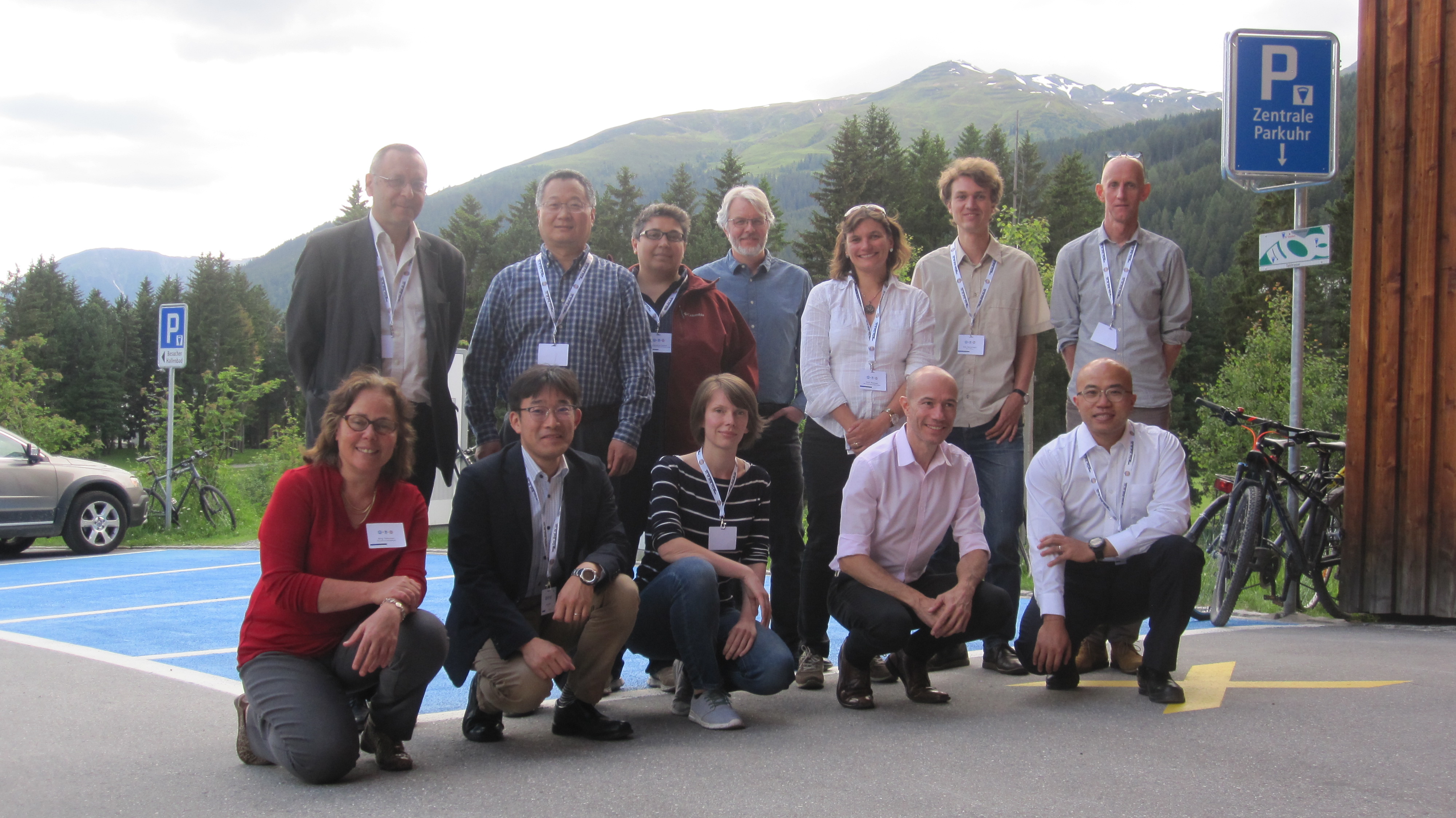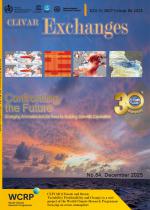CLIVAR/CliC Northern Ocean Region Panel (NORP) held its first-ever session at Davos

Group photo of the participants of NORP-1
The 1st session of the CLIVAR/CliC Northern Ocean Region Panel (NORP) was held on 15-16 June 2018 in Davos, Switzerland. The meeting was held alongside the POLAR2018, a joint event from SCAR and IASC (International Arctic Science Committee). And a joint session from SORP (CLIVAR/CliC/SCAR Southern Ocean Region Panel) and NORP was convened in the afternoon of 15 June.
As its first face-to-face meeting, the panel’s co-chair, John Fyfe first gave some background on the formation of the NORP, which aims to:
- Be a forum for coordinating activities on the role of the Arctic Ocean and neighboring seas in the global coupled climate system;
- Facilitate progress in developing new tools and methods to observe and model the Arctic Ocean and neighboring seas.
NORP deemed the partnership projects/groups important thus invited some representatives from them which include: ASOF (Thomas Haine); FAMOS (Andrey Prosuntinsky); SORP (Inga Smith); IASC (John Fyfe); PCPI (Marilyn Raphael), SEARCH (Marika Holland); PPP (Matthieu Chevallier); CDP (Olga Zolina); MOSAiC (Amy Solomon), and more.
Regarding the scope of the panel, discussion concluded that the panel had better focus on the physical climate system instead of covering too broad.
The NORP is based around the formation of several task teams. Much of the meeting time was dedicated to the reporting from all task teams and the discussions on redefining them, with updated tasks and action items in below:
- Effort to coordinate archiving/mirroring of past/future campaign/in-situ data for assimilation and analysis
- Identify key data gaps
- Define formats and protocols (start with ocean physics data)
- Coordinate with CLIVAR Global Synthesis and Observations Panel (GSOP)
- Links to Arctic Council
- Write up position paper first
- Arctic ocean-sea ice state estimates (reanalyses)
- Inconsistent treatment of sea ice, atmospheric forcing, assimilation schemes, and observational uncertainty
- Seek EU funding
- Need to make statements to promote this activity
- Coordinate with CLIVAR GSOP
- National representatives contact Copernicus
- Coordinate with CLIVAR Ocean Model Development Panel (OMDP) (suggest a high-latitude focus)
- Ask OMDP member to present during telecon
- The changing Arctic Ocean (including sea ice)
- Changing processes and impacts (including ocean turbulent mixing; impacts on SST, sea ice; dense water formation)
- Changing exchanges between Arctic and (1) adjacent seas / oceans, (2) land (river runoff, ice sheet), (3) atmosphere (energy and moisture transport)
- Arctic amplification and global linkages
- Local processes and forcings
- YOPP/MOSAiC data and other current campaigns
- Remote processes and forcings
- Metrics for atmo/ocean/sea ice system for CMIP runs and reanalyses to assess midlatitude-Arctic interactions (not included in PA-MIP)
- Change in climate state
- Change in climate variability
- Process diagnostics (ocean/atmosphere/ice)
- Impacts on extremes
- Distinguishing internal and forced variability in the Arctic coupled system
- Workshop planned
- US CLIVAR Working Group on Large Ensembles (advise on Arctic assessment)
- New methods for assessments of models and real-world variability
- Process-based assessment of model biases in Arctic forecasts and projections
- Use high resolution coupled models to simulate atmospheric synoptic variability and the coupling with sea ice and ocean, validate with observations (such as from the MOSAiC and coordinated campaigns) to then assess climate model simulations
- Coordinate with GEWEX polar cloud working group
- Greenland ice sheet – ocean interactions
- National boundaries limit progress
- Advocate for inclusion in CMIP7
- Sea level call in Horizon2020
- What is the impact of Greenland run off on the ocean?
Opportunities, overlaps and synergies with partnership projects/groups were also discussed, for example the Arctic storm tracks responses to the diabatic signals with CDP, cross membership with IASC and its fellowship programme.
During the joint session with NORP, co-chairs from both panels briefed the meeting on their terms of reference. Many research aspects of common interests were identified in the open discussion from the panel members:
- North/South Pole variability/processes:
- Ocean State Estimates (OSE): lack of observations is a common issue to both Southern Ocean and Arctic interior,
- Need to extend studies to capability and trends (polar ORA in works),
- Summer-season variability on sea ice increases in Arctic and Southern Ocean,
- How to bring in process perspectives.
- Joint interests on research topic:
- Sea ice;
- CMIP6 metrics (unifying metrics across CMIP models, CORE-II and OSE worlds),
- Overturning circulation (hundreds of years timeframe for water to move from north to south);
- Outstanding polar issues:
- Role of fresh water input on variability (which are not included in the reanalyses);
- Inability of models to simulate impact of synoptic variability on sea ice and ocean (rapid sea ice change);
- Polar mid-latitude linkages (Parallel modelling exercises for Northern Ocean and Southern Ocean, which could be a good place for both panels to work together). PA-MIP (Polar Amplification Model Intercomparison Project) studies the impact of Arctic and Antarctic sea ice on mid-latitudes.
The role of the tropics on the polar regions, comparison of sea ice behaviour at both polar, and bipolar see-saw were also recognized as interesting points to work on.
It was desirable to seek possible interactions and synergies among SORP and NORP task teams, in aspects such as the link with CLIVAR Climate Dynamics Panel, projects on observing system design (future design of buoy and radiosonde) in the Antarctic and Arctic (MOSAiC, the Multidisciplinary drifting Observatory for the Study of Arctic Climate in the Arctic and SOOS in the Southern Ocean).
The next proposed joint activity from SORP and NORP is the 2021 CLIVAR/CliC summer school or workshop supported by ICTP in Trieste, Italy. Topic and location are yet to be determined by the panel co-chairs.
Group photo of the participants to the joint session of NORP and SORP











Add new comment